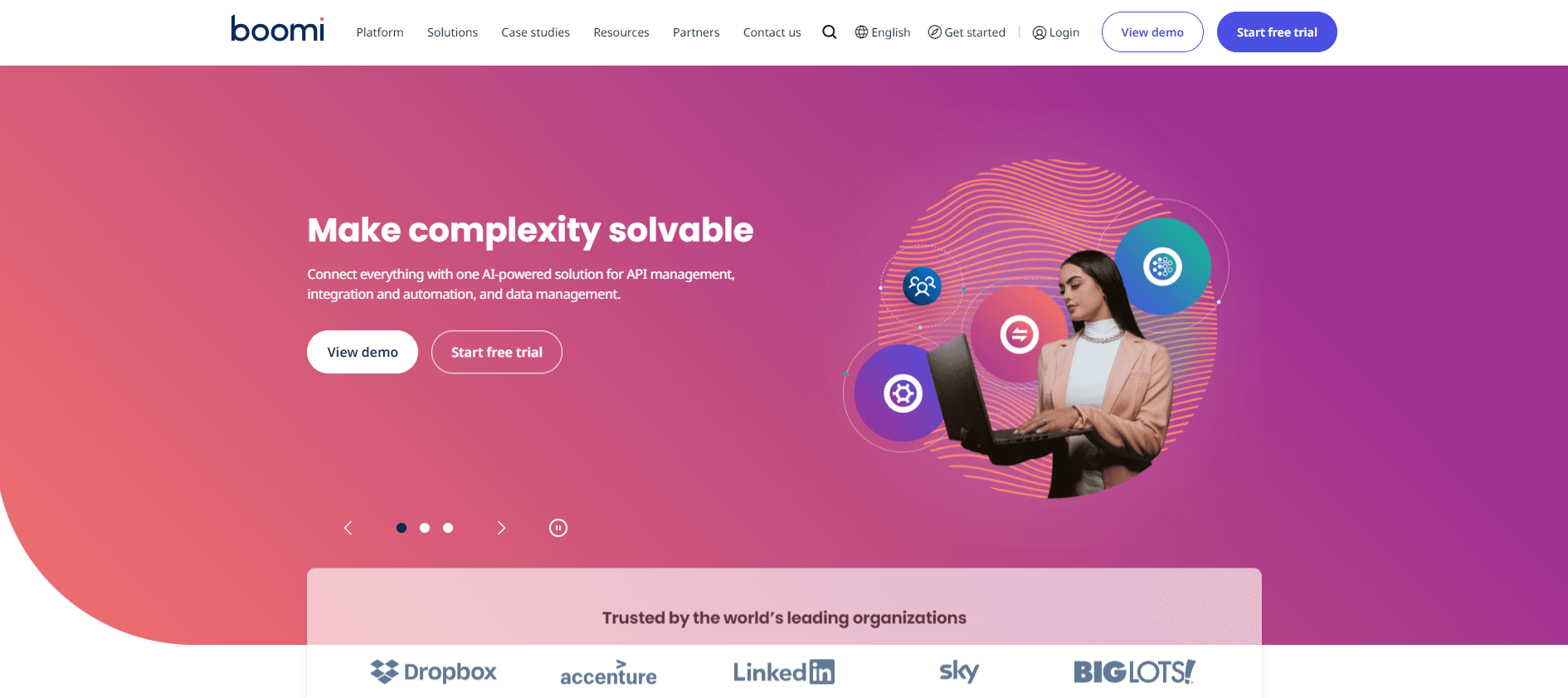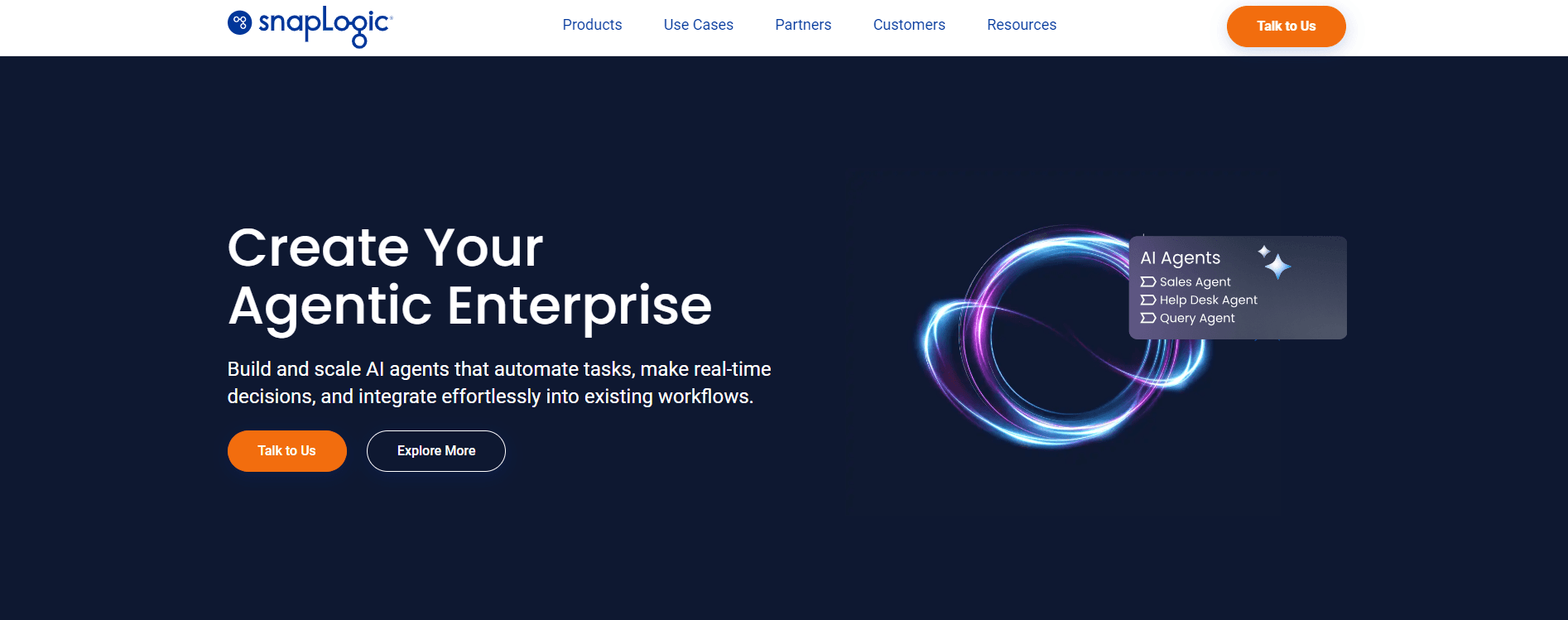Top 10 ERP System Integration Solution Providers for Seamless Business Operations

Enterprise Resource Planning (ERP) systems are critical for managing a company’s core processes—from inventory management to human resources and finance. However, as businesses scale and adopt various digital tools, integrating these tools with ERP systems becomes essential to ensure efficient workflows, data accuracy, and seamless collaboration across departments.
ERP integration solutions help brands overcome operational silos by connecting their ERP systems with other applications, offering better visibility and data synchronisation.
The Difference Between ERP vs ERP Integration
While both ERP systems and ERP integration solutions are pivotal for modern businesses, it is essential to understand their distinct roles:
1. ERP (Enterprise Resource Planning)
An ERP system is a centralized platform that integrates core business functions—such as finance, HR, procurement, manufacturing, and sales—into a single system. The goal of ERP is to provide a unified source of truth, where all departments within a company can access real-time data, helping streamline workflows, improve decision-making, and ensure consistency.
- Example: An ERP system like SAP can manage everything from inventory to customer orders, human resources, and financial reporting. It serves as the backbone of a company’s operations.
However, while ERP systems can perform numerous functions, they are often limited in connecting to external applications, such as customer relationship management (CRM) systems, marketing platforms, or third-party logistics providers. This is where ERP integration becomes critical.
2. ERP Integration
ERP integration refers to the process of connecting an ERP system with other applications or platforms to ensure data flows seamlessly between them. Integration eliminates data silos, enabling real-time visibility and efficient communication between different systems.
- Example: If a business uses Salesforce for CRM and SAP as its ERP system, an integration platform like Mulesoft or Workato would be necessary to ensure that data from Salesforce (e.g., customer information or sales leads) is accurately reflected in SAP without requiring manual updates.
Key Differences
- Functionality: ERP systems provide core business operations management, while ERP integration tools connect these ERP systems with other external software to ensure data consistency across platforms.
- Scope: ERP solutions handle internal processes within the company, but ERP integration enables external systems (such as customer portals, vendor management systems, or cloud applications) to interface with the ERP.
- Use Case: A standalone ERP system might be sufficient for a small business that primarily operates within a single platform. However, for larger companies that rely on multiple systems, ERP integration is essential for streamlining workflows and ensuring a smooth flow of data between departments and systems.
Top 10 ERP Integration Software for Your Brand 2024
1. Mulesoft

Mulesoft is a powerful integration platform that simplifies ERP integration through its Anypoint Platform. With Mulesoft, businesses can easily connect ERP systems such as SAP, Oracle, or Netsuite to other on-premises or cloud-based applications. Its API-led approach allows brands to create reusable APIs that not only streamline current integrations but also future-proof their systems for growth.
- Why It Matters: Mulesoft is ideal for large companies with complex, multi-department systems needing flexibility for future integrations. Its API-driven approach enhances scalability and long-term adaptability.
2. Dell Boomi

Dell Boomi offers a cloud-native integration platform (iPaaS) that simplifies ERP integration with its low-code interface. This is a perfect solution for companies that need quick and seamless connections between ERP systems and other tools like CRM, eCommerce, and marketing platforms.
Boomi's drag-and-drop interface and pre-built connectors ensure that the learning curve is minimal, allowing businesses to focus on streamlining their operations rather than grappling with complex setups.
- Why It Matters: Brand owners benefit from faster go-live times due to Boomi’s intuitive interface, ensuring that integration projects do not consume significant resources or time.
3. Workato

Workato stands out as an intelligent automation platform that integrates ERP systems using a low-code framework. This platform is designed for companies that require ERP systems to communicate with hundreds of other applications, such as CRM, supply chain management, and eCommerce platforms.
Workato's automation capabilities help brands automate workflows between ERP and other systems, reducing manual interventions and improving operational efficiency.
- Why It Matters: Workato’s pre-built connectors and automation tools are ideal for businesses looking to reduce manual tasks and improve productivity while maintaining a highly scalable integration framework.
4. Jitterbit

Jitterbit provides a high-performance integration platform that excels in connecting ERP systems with other cloud or on-premises applications. Jitterbit’s real-time data synchronization ensures that the information between ERP and other systems is always up-to-date.
Its integration templates are customizable, allowing businesses to tailor workflows to their specific requirements.
- Why It Matters: Jitterbit's real-time integration capabilities are perfect for businesses that rely on up-to-date data for decision-making, such as in industries with dynamic supply chains.
5. Celigo

Celigo is a popular choice for mid-sized businesses that require affordable and scalable ERP integration solutions. Its Integrat.io platform connects ERP systems like Microsoft Dynamics, SAP, or Netsuite to various other tools, such as marketing automation, E-commerce platforms, and CRM systems.
Celigo offers a user-friendly interface with pre-configured integration templates, enabling faster time-to-market for new integrations.
- Why It Matters: Celigo’s affordability, combined with its ease of use, makes it a great choice for growing companies with limited IT resources but high integration needs.
6. Informatica

Informatica offers a robust integration platform with a strong focus on data governance and management. It enables seamless integration between ERP systems and other applications while ensuring that data is properly synchronized, cleaned, and governed. This is especially useful for companies that deal with sensitive data and need to ensure compliance with regulatory requirements.
- Why It Matters: Informatica’s focus on data quality and compliance makes it a top choice for businesses in highly regulated industries like pharmaceuticals, healthcare, and finance.
7. SnapLogic

SnapLogic’s platform provides a hybrid integration approach, allowing businesses to connect ERP systems with both cloud-based and on-premise applications. It enables rapid integration through its visual development interface, which simplifies the creation of workflows and reduces dependency on coding. SnapLogic supports a wide range of ERP platforms, making it versatile for companies with diverse software ecosystems.
- Why It Matters: For businesses with complex workflows and a mix of cloud and on-premise systems, SnapLogic offers the flexibility needed to create comprehensive ERP integrations quickly.
8. Scribe Software (TIBCO Cloud Integration)
Scribe Software, now part of TIBCO Cloud Integration, provides an extensive library of pre-configured connectors for ERP systems, along with drag-and-drop customization features.
The tool enables businesses to sync ERP systems with external applications, such as sales platforms or logistics management systems. Scribe’s solutions are flexible and offer customization options for companies with unique integration needs.
- Why It Matters: TIBCO Cloud Integration is a strong solution for businesses looking to implement highly customized ERP integrations without extensive coding.
9. Microsoft Power Automate

Power Automate, part of the Microsoft ecosystem, is a natural choice for companies already using Microsoft products such as Dynamics 365 or Azure. It allows for seamless ERP integration with various Microsoft and third-party applications.
Businesses can automate workflows, streamline processes, and improve operational efficiency by connecting their ERP system to other critical business tools.
- Why It Matters: For brands deeply embedded in the Microsoft ecosystem, Power Automate offers unmatched native integration and automation capabilities, streamlining operations with minimal disruption.
10. Oracle Integration Cloud

Oracle Integration Cloud is designed for Oracle ERP customers but offers broad connectivity with other applications, both cloud-based and on-premises. Oracle’s platform provides AI-driven automation tools and pre-built integrations for various systems, reducing the complexity of integrating ERP systems into existing business operations. Its scalable nature makes it suitable for businesses looking to support future growth.
- Why It Matters: For enterprises using Oracle ERP, the Oracle Integration Cloud offers a comprehensive solution for creating automated, scalable, and AI-driven workflows that integrate across the entire business.
How to Choose the Right ERP Integration Vendor?

Selecting the right ERP integration vendor is a strategic decision that can significantly impact the efficiency and scalability of your business operations. Here are key factors to consider when evaluating vendors:
- Compatibility with Existing Systems: Ensure that the integration solution supports your current ERP system, whether it's SAP, Oracle, Microsoft Dynamics, or any other. Additionally, check its ability to integrate with other critical applications like CRM, eCommerce platforms, or supply chain management software.
- Ease of Use: A low-code or no-code interface is essential for businesses without extensive IT resources. Solutions like Dell Boomi and Workato, known for their user-friendly interfaces, reduce the time and effort needed to set up integrations.
- Customization and Flexibility: Depending on your business model, you may require customized integrations. Look for vendors that offer pre-built connectors along with customizable options to tailor integrations as your business grows.
- Real-Time Data Syncing: If your business relies on real-time data for decision-making—such as in supply chain operations—select a vendor that offers real-time data synchronization. Jitterbit and SnapLogic excel in this area.
- Scalability: As your business expands, so will your integration needs. Choose a vendor that can scale with your business, providing the flexibility to add more applications or handle higher volumes of data over time. Mulesoft and Oracle Integration Cloud are known for their scalability.
- Support and Maintenance: Ensure that the vendor provides ongoing technical support, regular updates, and maintenance services. Look for a provider with strong customer support to assist with troubleshooting and upgrades as your business evolves.
- Cost: While pricing is a crucial factor, the cheapest solution may not always be the best. Consider the total cost of ownership, including setup fees, subscription models, maintenance, and hidden costs. Evaluate vendors based on long-term value and ROI, not just upfront costs.
Better Business Operation
Choosing the right ERP system integration solution is vital. For brand owners and decision-makers, investing in an ERP integration solution isn’t just about connecting software; it’s about creating a cohesive and efficient digital ecosystem that empowers your business to grow, adapt, and stay competitive. Whether you're a mid-sized company looking for quick integrations or a large enterprise with complex operational needs, the right ERP integration tool can significantly enhance your overall business performance.
If you want to learn more about ERP integration systems and how to implement your anti-counterfeiting strategy around the tools, get in touch with us. Join the rank of industry leaders and secure your supply chain today!
